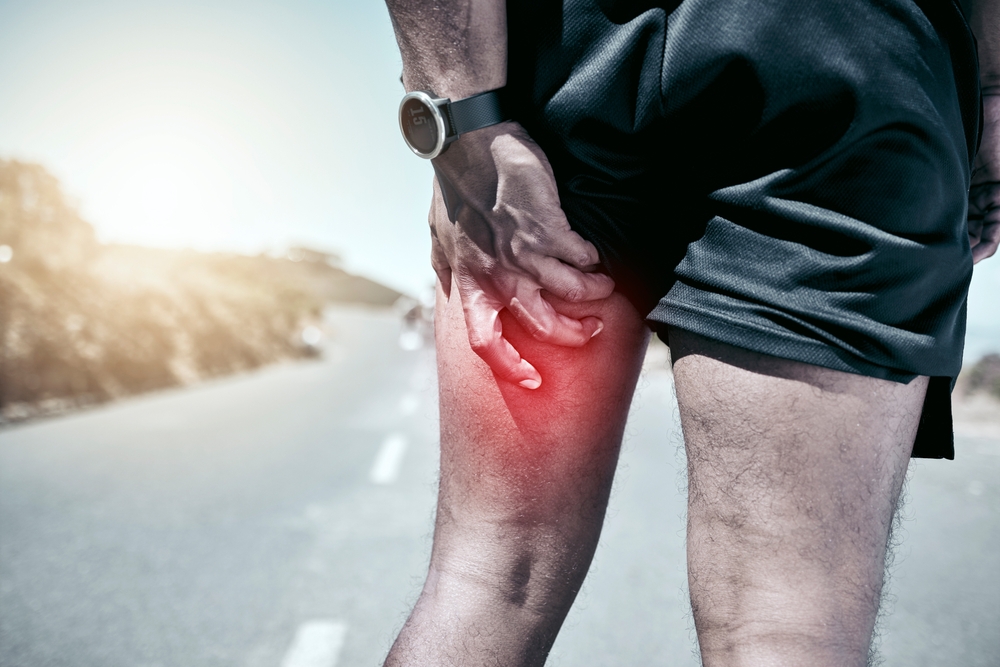PRP for Hamstring Injuries in Softball and Senior Athletes
Softball has become a popular sport for young and old alike. There are leagues for collage, professionals, women, men, golden age participants and Olympic athletes. In the United States alone there are 245,000 teams playing all levels of softball.
It is interesting to note how the game was invented. The earliest known softball game was played in Chicago on Thanksgiving Day in 1887. It took place when a gathering of men waited to hear the results of the Harvard Yale football game. When the score was announced and all bets were paid, a Yale alumnus threw a boxing glove at a Harvard supporter. The Harvard grad grabbed a stick and hit the rolled-up glove and another man yelled, “Play Ball”. The game of softball began, and the boxing glove was tightened into a ball and a broom handle served as a bat. Since the ball was soft, softball was invented.
Softball Participation and Injury Trends in the United States
Since the invention, softball has become one of the most popular sports in the US. Some estimates are that 40 million Americans will play at least one softball game a year. With young and old participating in this sport, injuries are a common occurrence.
Senior softball is thriving in the United States with more than 1.5 million active players aged 50 and above participating in leagues nationwide. Senior Softball USA reports teams in all 50 states and parts of Canada, with divisions for players in their 50s, 60s, 70s, and even 80 and above. The surge in participation highlights the importance of injury prevention and strategies tailored to older athletes.
The Silver Senior Softball League of South Jersey was contacted and asked about the most common injuries incurred during participation. They noted five common injuries.
- Hamstring injuries
- Sprains and strains
- Tendinitis
- Shoulder and rotator cuff injuries
- Fractures
Risk Factors for Hamstring Injury
- Age- Senior players are at high risk due to reduced muscle elasticity and strength.
- Previous Injury- Hamstring injuries have a high rate of reoccurrence.
- Fatigue- sore overstressed muscles are prone to injury.
- Poor biomechanics- improper running technique or posture
- Obesity-Hamstrings can be overloaded with excess weight bearing.
Anatomy of the Hamstring
The hamstring muscle group consists of three muscles located at the posterior thigh. These are the semitendinosus, semimembranosus and the biceps femoris. These muscles originate from the ischial tuberosity and insert below the knee joint. Their primary function includes hip extension and knee flexion. The biceps femoris has a long and short head, with the long head being biarticular. This muscle is the commonly injured in hamstring injuries due to the complex role during sprinting.
Prevention Strategies
- Proper Warm Up with dynamic stretches and progressive movement drills.
- Strength training with focus on hamstrings, core and glutes
- Flexibility to maintain normal ranges of motion.
- Overall conditioning and agility drill specific to the activity
- Biomechanics analysis to evaluate and identify movement flaws.
Standard Treatment Options
Standard treatment of hamstring injuries includes the RICE protocol (rest, ice, compression and elevation), non-steroidal anti-inflammatory agents and rehabilitation. Physical therapy with neuromuscular training and stretching are an integral part of the recovery protocol.
In complete tears, surgical repair may be needed but surgery may prolong recovery times and lead to common surgical complications.
Recovery Timeline by Grade
- Grade 1- mild strain- typically 1-2 weeks, minimal pain and no significant lost strength.
- Grade 2- partial tear- 4-8 weeks, noticeable pain, swelling and weakness.
- Grade 3- complete tear- 3-6 months or more, severe pain, bruising and loss of function.
Diagnosis is typically clinical with confirmation by ultrasound or MRI.
Re-injury is common with approximately 30% recurrence rates in highly trained athletes in the same season. Older individual’s reoccurrence rates are higher.
In professional soccer, in the most elite leagues, each hamstring injury cost the club approximately $30-$50 thousand dollars in lost wages and associated costs. In the NFL, hamstring injuries are among the top causes of missed playing time. In high caliber players, each lost game can contribute to millions of dollars in lost player availability annually.
Platelet Rich Plasma (PRP) for Hamstring Injury Treatment
Platelet Rich Plasma is an autologous blood derived concentrate, rich in growth factors, cytokines and bioactive proteins. In thousands of published peer reviewed and double blind studies, platelet rich plasma has been proven to regenerate damaged tissues.
Platelet Rich Plasma contains growth factors that stimulate muscle repair and rejuvenation in injuries such as hamstring tears and ligamentous injuries.
- Insulin like Growth Factor – stimulates muscle cell proliferation, differentiation and repair. It has a variant called IGF-1Ea and IGF-1Ec called Mechano Growth Factor which localizes to muscle and is highly anabolic after injury.
- Fibroblast Growth Factor – supports cell proliferation and angiogenesis during muscle healing.
- Hepatocyte Growth Factor – activates quiescent satellite cells which are often released after acute injury.
- Vascular Endothelial Growth Factor – promotes blood vessel growth supporting oxygen and nutrient delivery to regenerating muscle.
- Transforming Growth Factor Beta – stimulates collagen synthesis and promotes extracellular matrix remodeling.
- Platelet Derived Growth Factor – stimulates fibroblast proliferation and collagen production in tendon and ligament repair.
- Fibroblast Growth Factor – involved in tendon repair promoting fibroblast proliferation and new collagen formation.
There have been at least 300 growth factors identified and carried on the granules of the platelets. These are released into areas of tissue damage and activate the overall bodies repair cascade. Studies have proven a 26% reduction in return to play time for hamstring injures when platelet rich plasma is used in the treatment.
Clinical Studies Supporting PRP
Update on the Use of Platelet Rich Plasma Injections in the Management of Musculoskeletal Injuries: A Systematic Review of Studies From 2014 to 2021
Orthop J Sports Med 2022 Dec 9;10(12): 23259671221140888 PMID 36532150
Purpose: To determine if there are any recent studies that show any clear benefits regarding the use of PRP in the management of soft tissue injuries
Conclusion: Six studies examined PRP in acute soft tissue injuries with two of these reporting significant improvements in recovery time for hamstring injuries.
Hamstring Injuries: A Current Concepts Review: Evaluation, Nonoperative Treatment, and Surgical Decision Making
Am J Sports Med 2024 Mar;52(3):832-844 PMID 37092718
Conclusion: Many hamstring injuries can be successfully managed with nonoperative measures such as activity modification and physical therapy and adjuncts such as platelet rich plasma injections.
Platelet Rich Plasma Injection for the Treatment of Hamstring Injuries: A Systematic Review and Meta-analysis with Best-Worst Case Analysis
Am J Sports Med 2021 Feb;49(2):529-537 PMID 32427520
Conclusion: There has been statistically nonsignificant evidence to suggest that PRP injection and physical therapy reduced return to play or reinjury rates compared to no treatment or physical therapy alone for hamstring injuries in a short term follow up.
Authors note: In review of this study, there was improvement in all areas reviewed. Although this author concluded it was not significant statistically.
Hamstring Injury Treatments and Management in Athletes: A Systematic Review of the Current Literature
JBJS Rev 2023 Nov 20;11(11). Doi: 10.2106/JBJS.RVW.23.00161 PMID 37983561
Conclusion: Treatments for hamstring injuries exhibit varied efficacy. Although rest, ice, compression and elevation remain essential for acute management, rehabilitation focusing on muscle strengthening and flexibility is critical. The potential benefits of platelet rich plasma injections, especially in chronic cases, requires more research.
Authors note: Research and studies all show benefit of platelet rich plasma for hamstring injuries. However, in some studies the benefit was not deemed to be significant. There were no noted side effects from the platelet rich plasma and in most cases, the amount of PRP, the number of injections, the activation method and the mode of image guidance was not mentioned. With the amount of growth factors, cytokines and bioactive protein that are contained in platelet rich plasma, no allergic manifestations and a favorable side effect profile, consideration should be given for platelet rich plasma to be a cornerstone in the treatment protocol for these injuries.
Juventix Regenerative Solutions for PRP and Soft Tissue Recovery
Juventix Regenerative Medical is an industry leader in the regenerative medical field. Our Platelet Rich Plasma Kits are designed for safety, sterility and effectiveness. Our kits are FDA cleared and scientifically manufactured to provide a platelet concentrate, devoid of red blood cells with a minimum number of leukocytes that are critical for the regenerative process.
Juventix Regenerative Medical offers a patented LED Activator to activate the platelets and begin the regenerative process. The activation is a critical step in the release of growth factors, cytokines and bioactive proteins from the granules that are contained on the platelets and is accomplished with LED light. This negates the use of chemical additives such as Calcium Chloride, Thrombin or Collagen. This mode of activation by LED light provides sustained growth factor release versus older methods of activation while adhering to the minimal manipulation standards of the FDA.
Juventix Regenerative Medical is proud to be a distributor of the PhysioPRO Shockwave System. This clinical grade radial shock wave device induces intracellular and extracellular reactions to assist in the repair and regeneration of tissues. The wave activates cellular pathways that drive the healing process. Shock wave treatment stimulates angiogenesis and neogenesis. These metabolic processes form new blood vessels to better oxygenate damaged tissues and mediates repair. The shock wave also modulates and overloads pain receptors to decrease pain. Treatments with the PhysioPRO can attract mesenchymal stem cells to migrate to the damaged tissue area for enhanced cellular regeneration. The PhysioPRO complements Platelet Rich Plasma and they both work synergistically in repair and regeneration. This dual approach would be advantageous in the treatment of hamstring injuries.
Juventix Regenerative Medical has a vast array of products, devices and services tailored for the medical and regenerative professional. Platelet Rich Plasma Kits and the PhysioPRO are two of the many devices that offer the latest in the treatment of soft tissue, ligamentous and hamstring injuries.
With our premier line of products and support from our experienced staff, Juventix Regenerative Medical is poised to aid any professional in enhancing clinical outcomes while increasing patient satisfaction.
RESTORE, REVIVE, REGENERATE – JUVENTIX REGENERATIVE MEDICAL
Regenerative Regards,
Dr. Robert McGrath








